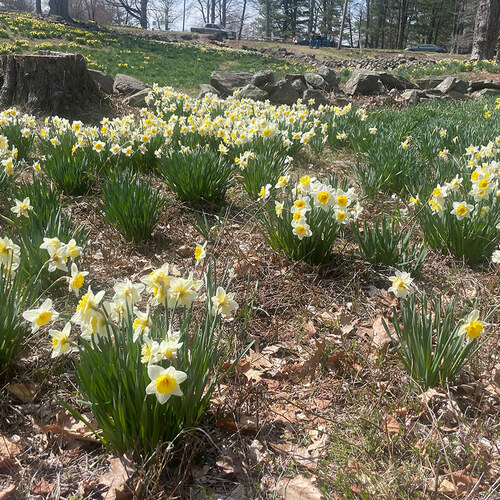Happy Friday, GPODers!
As I teased in the Earth Day post last Tuesday, I’m sharing my photos from a recent trip to the annual daffodil display at Laurel Ridge, in Litchfield, Connecticut. This private garden is a hidden spring gem and gift to the area, made open to the public for a few months every year and free for all that respect the rules of “no dogs, no picnics, and no picking flowers.”
These were the only requests of Virginia and Remy Morosani, the founders of Laurel Ridge Farms and the stewards who planted the original 10,000 daffodil bulbs that began this display in 1941. Over the years, more bulbs were added and downtime during the farming season was used to divide and further spread these cheerful bulbs. Though it was an expensive and laborious creation, the eclectic couple did not see this as a moneymaking opportunity but simply as something beautiful that needed to be shared with as many people as possible. To learn more about the founders of the Laurel Ridge daffodils, check out this amazing post on Instagram.
Found on a quiet road in the winding hills of Litchfield, this space has a naturalistic feel unlike that of any other public garden I’ve visited or seen photos of. Rather than perfectly organized rows of daffodils planted in a pattern or in evenly spaced clumps, the flowers pop up and spread in naturalized masses, with some areas denser and others more scattered. While different varieties can be found on the property, most of the daffodils planted were classic trumpet daffodils (Narcissus pseudonarcissus, Zones 5–8).
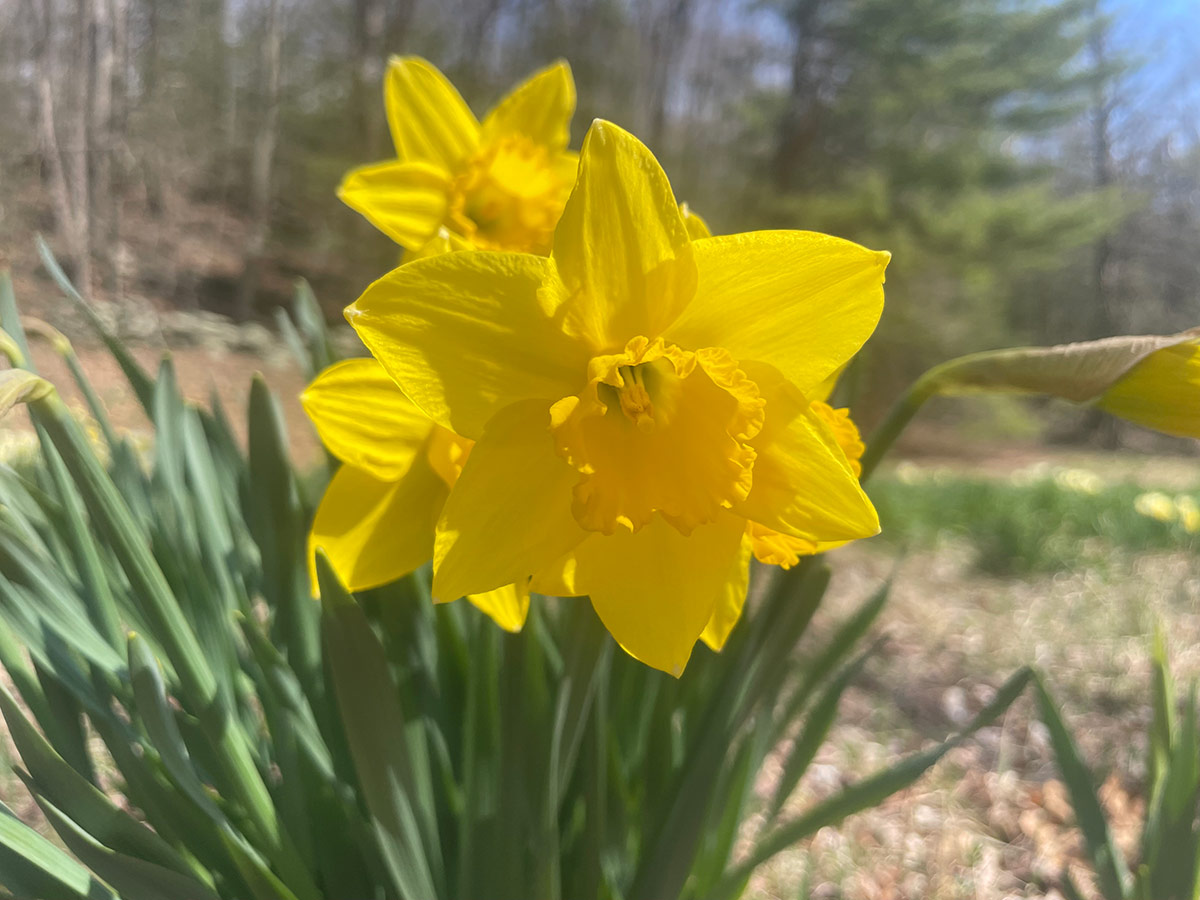 Of course, that didn’t stop me from scouring the fields for every new or different variety and cultivar that I could find. One that wasn’t hard to miss was the ‘Dutch Master’ (N. ‘Dutch Master’, Zones 2–9), also a trumpet variety but in an iconic bright yellow.
Of course, that didn’t stop me from scouring the fields for every new or different variety and cultivar that I could find. One that wasn’t hard to miss was the ‘Dutch Master’ (N. ‘Dutch Master’, Zones 2–9), also a trumpet variety but in an iconic bright yellow.
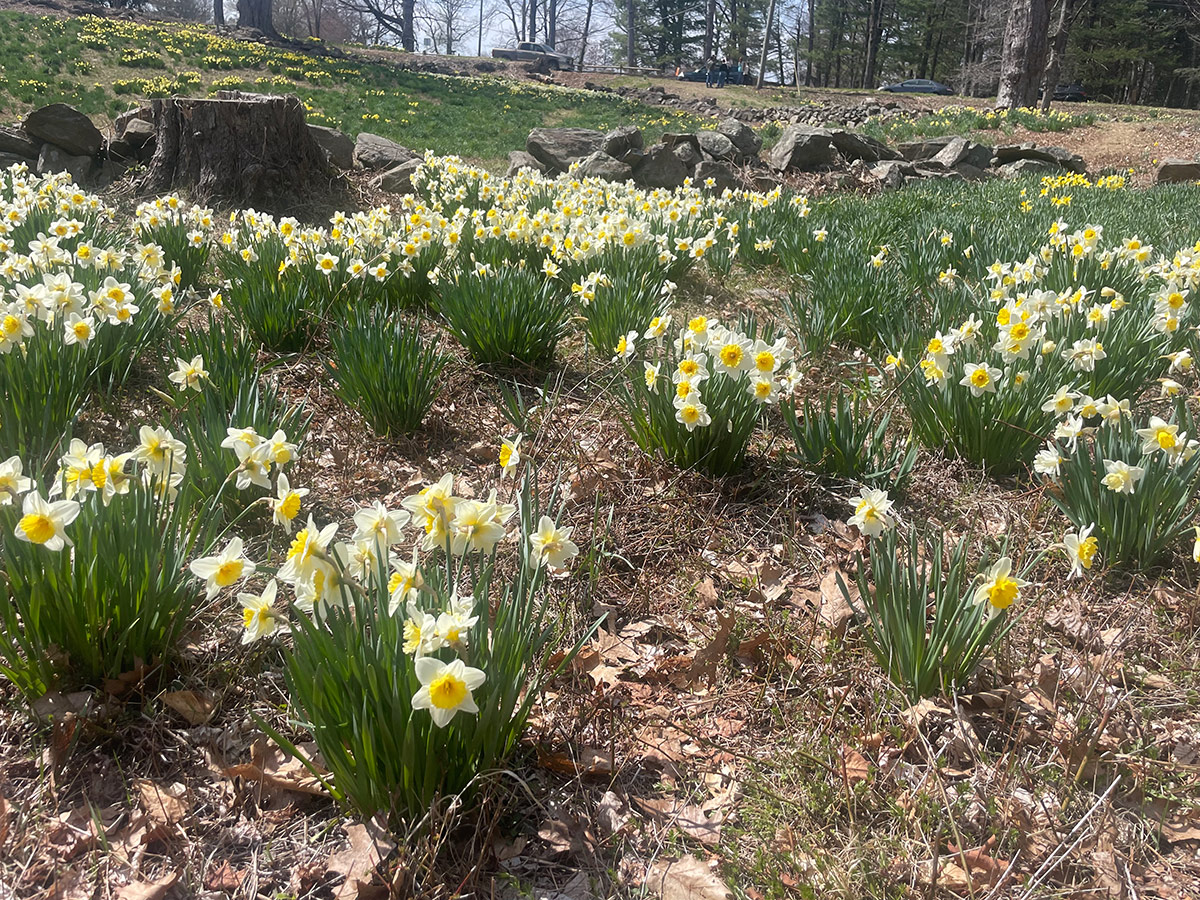 While naturalistic in design, the human touch is still evident in low rock walls that are a staple of New England and are utilized to corral the masses of daffodils into different sections. In front of this wall, a lovely massing of large cupped ‘Ice Follies’ (N. ‘Ice Follies’, Zones 3–8) were erupting in blooms.
While naturalistic in design, the human touch is still evident in low rock walls that are a staple of New England and are utilized to corral the masses of daffodils into different sections. In front of this wall, a lovely massing of large cupped ‘Ice Follies’ (N. ‘Ice Follies’, Zones 3–8) were erupting in blooms.
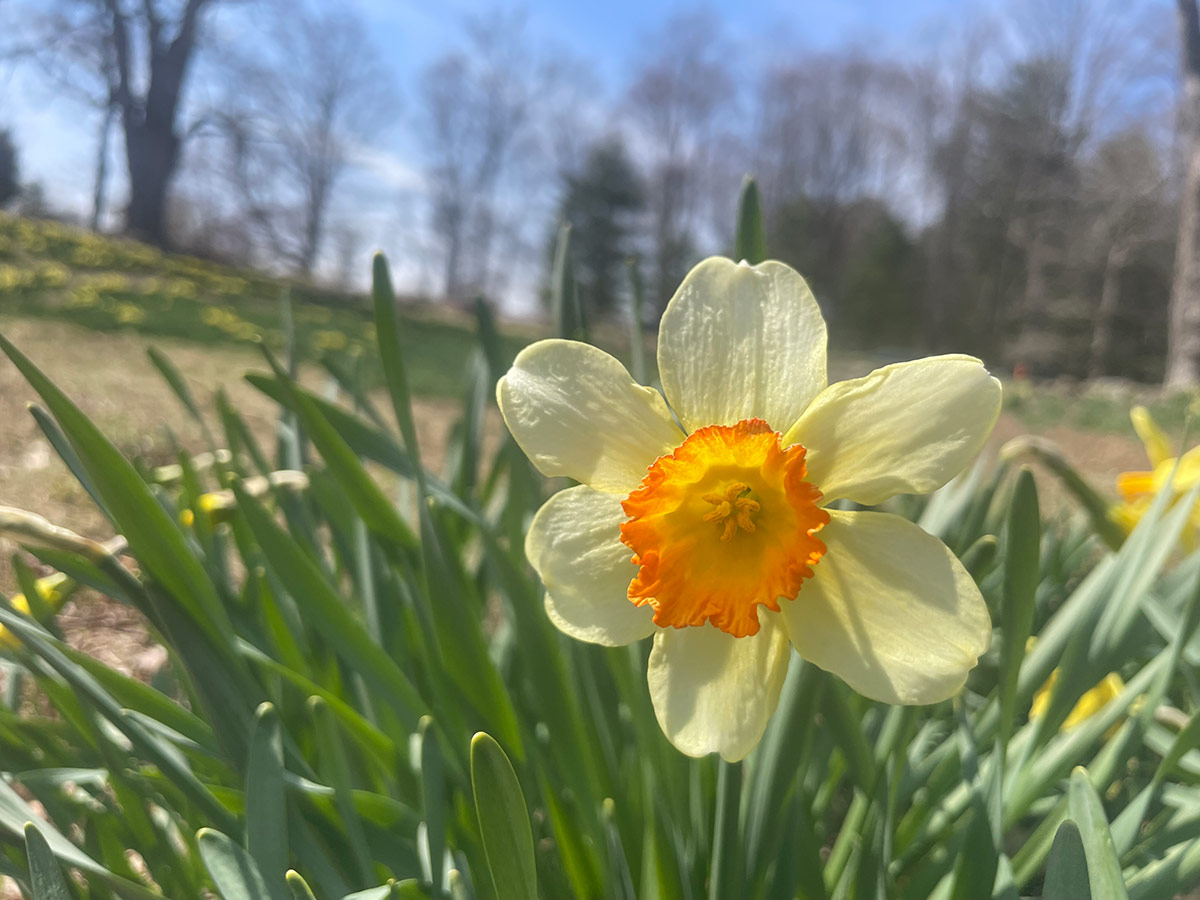 Another cultivar that caught my eye was this lone flower with incredible gradients on both the corona (or trumpet) and surrounding petals. Though it is a very new cultivar, it looks most like a ‘Lincoln Eliot’ (N. ‘Lincoln Eliot’, Zones 3–7). If anyone recognizes this beauty as a cultivar they grow in their garden, please let me know!
Another cultivar that caught my eye was this lone flower with incredible gradients on both the corona (or trumpet) and surrounding petals. Though it is a very new cultivar, it looks most like a ‘Lincoln Eliot’ (N. ‘Lincoln Eliot’, Zones 3–7). If anyone recognizes this beauty as a cultivar they grow in their garden, please let me know!
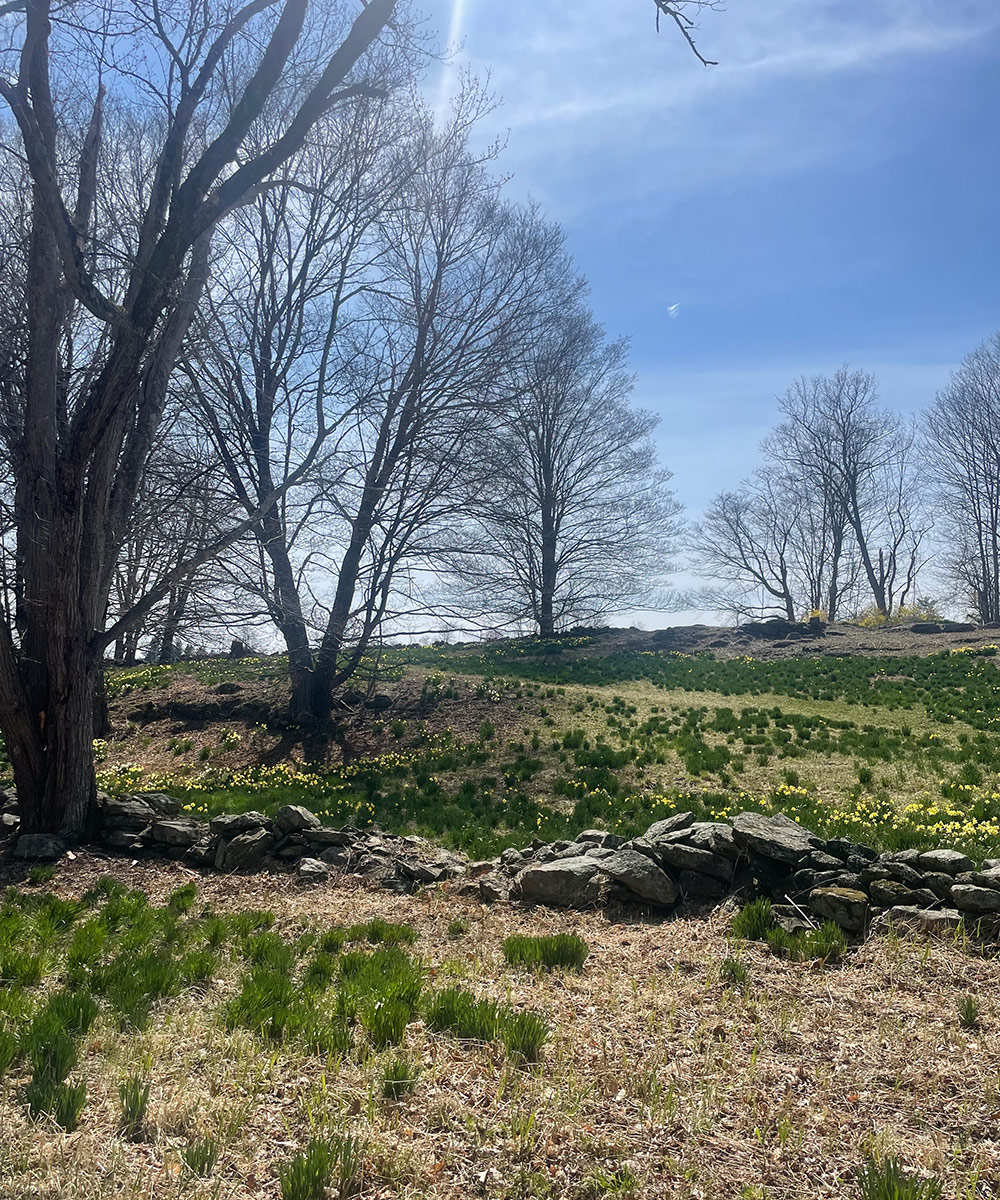 Throughout the fields are various informal paths forged in the grass; you might be able to spot the diagonal path cutting up the hill on the right side of this photo. This added to the feeling of frolicking through naturalized fields rather than being guided through a garden with intention. You can also see that the fields weren’t quite at their peak. Despite the already impressive number of flowers, large sections had yet to come into bloom.
Throughout the fields are various informal paths forged in the grass; you might be able to spot the diagonal path cutting up the hill on the right side of this photo. This added to the feeling of frolicking through naturalized fields rather than being guided through a garden with intention. You can also see that the fields weren’t quite at their peak. Despite the already impressive number of flowers, large sections had yet to come into bloom.
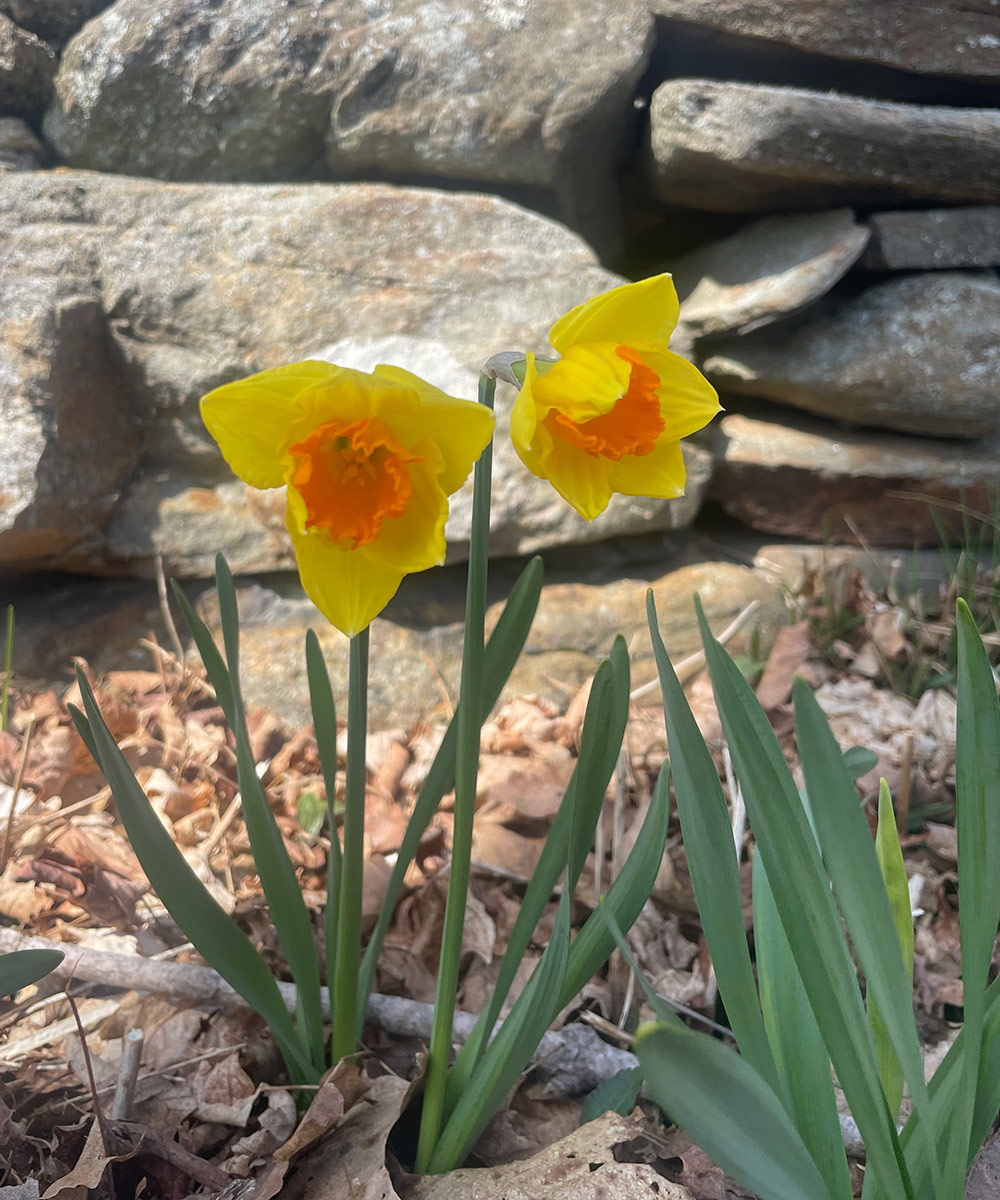 These daffodils were just unfurling, but their bright petals were hard to miss. Though not yet showing their full size, I’m pretty confident these are large cupped ‘Pride of Lions’ (N. ‘Pride of Lions’, Zones 3–8).
These daffodils were just unfurling, but their bright petals were hard to miss. Though not yet showing their full size, I’m pretty confident these are large cupped ‘Pride of Lions’ (N. ‘Pride of Lions’, Zones 3–8).
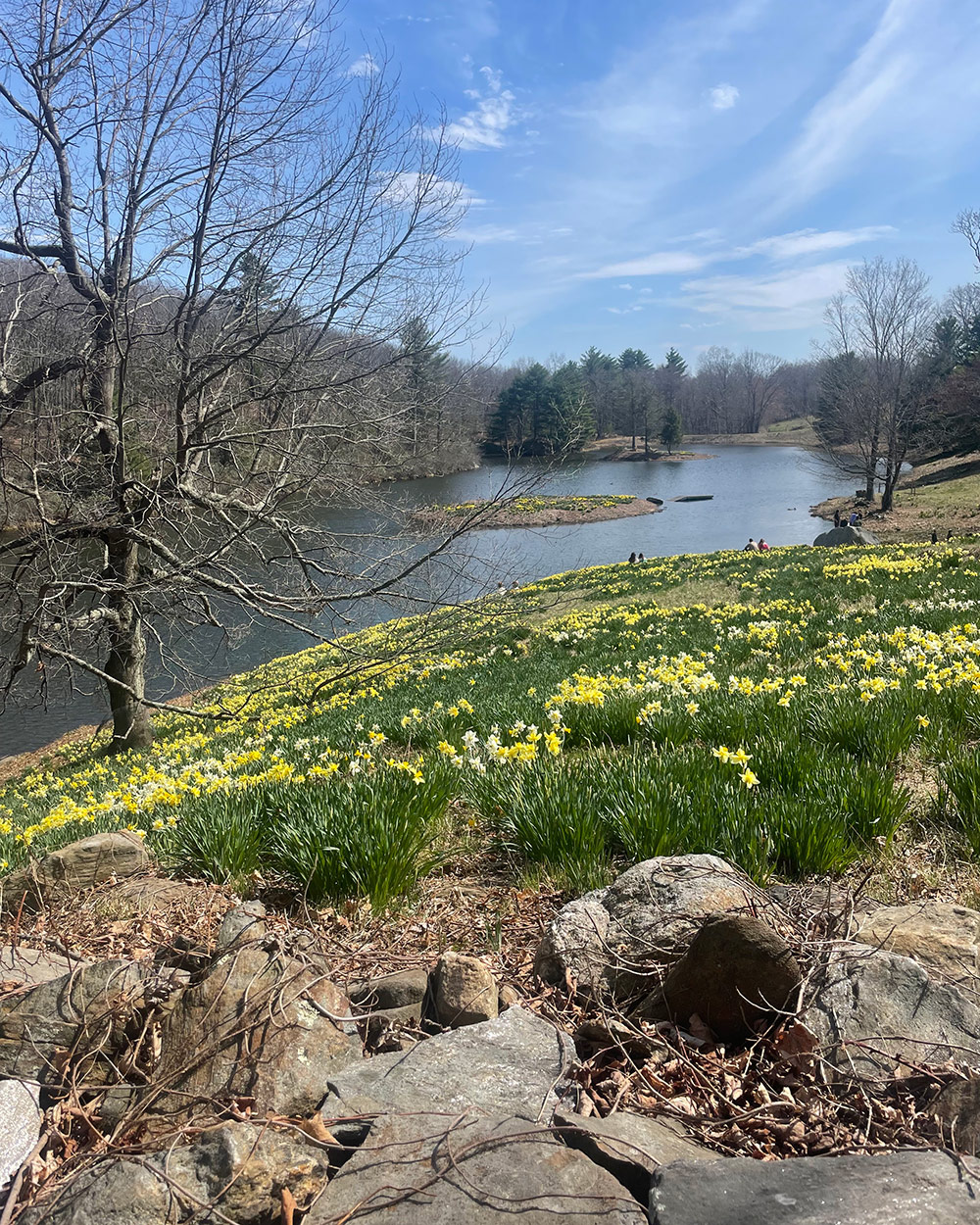 One of the many highlights of Laurel Ridge is the steep hill that looks out onto the small lake on the property. Because the hill gets full sun, more of the daffodils in this area had bloomed. Here, many people found a spot to sit and enjoy the scenery for a while.
One of the many highlights of Laurel Ridge is the steep hill that looks out onto the small lake on the property. Because the hill gets full sun, more of the daffodils in this area had bloomed. Here, many people found a spot to sit and enjoy the scenery for a while.
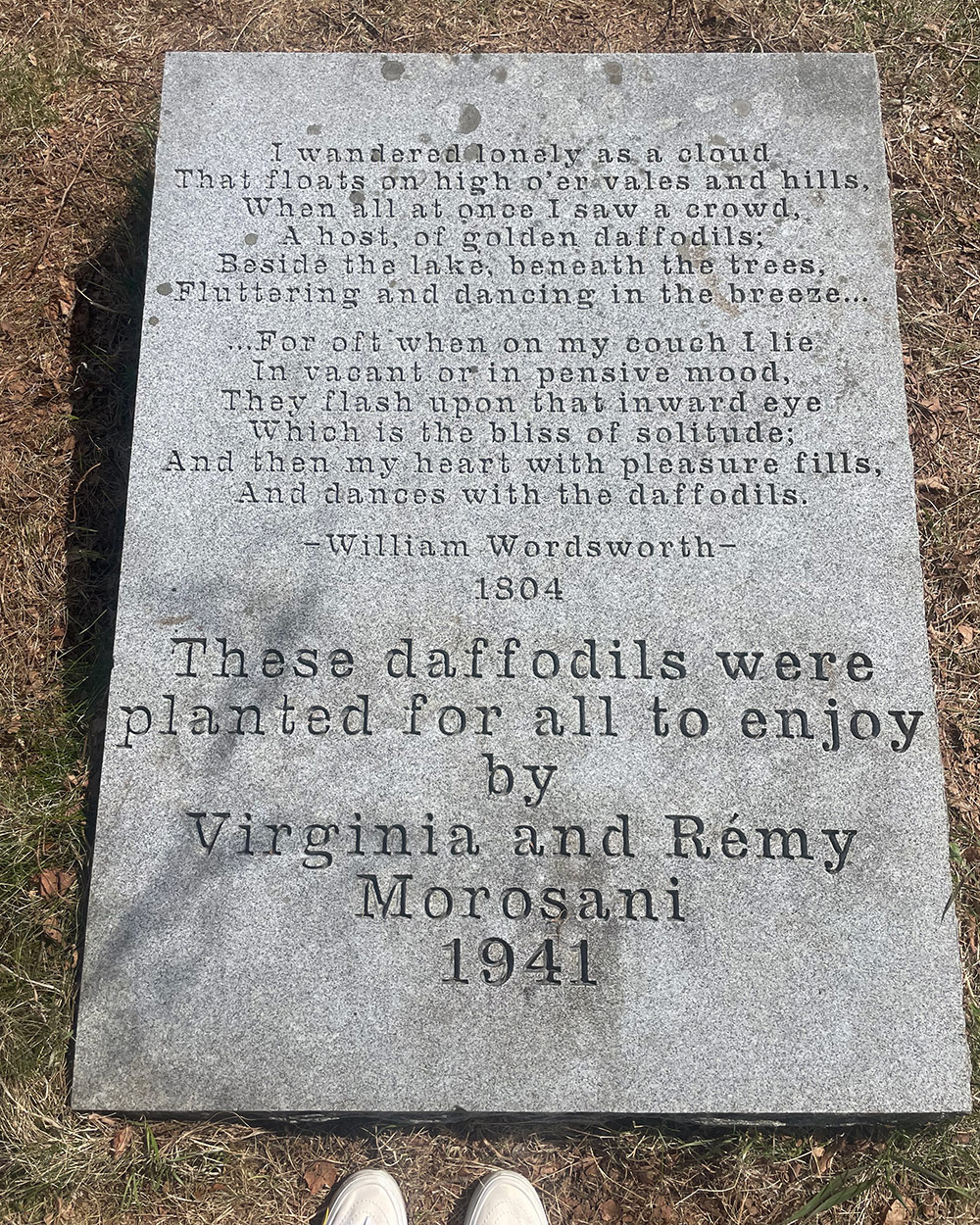 At the top the largest hill is this memorial plaque, inscribed with two stanzas from the William Wordsworth poem “I Wandered Lonely as a Cloud,” which inspired Virginia Morosani to plant these fields. It reads:
At the top the largest hill is this memorial plaque, inscribed with two stanzas from the William Wordsworth poem “I Wandered Lonely as a Cloud,” which inspired Virginia Morosani to plant these fields. It reads:
I wandered lonely as a cloud
That floats on high o’er vales and hills,
When all at once I saw a crowd,
A host, of golden daffodils;
Beside the lake, beneath the trees,
Fluttering and dancing in the breeze. . .
. . . For oft, when on my couch I lie
In vacant or in pensive mood,
They flash upon that inward eye
Which is the bliss of solitude;
And then my heart with pleasure fills,
And dances with the daffodils.
 At the bottom of the hill, there is a great view of the little island that sits in the middle of the lake—of course, also adorned with plenty of daffodils.
At the bottom of the hill, there is a great view of the little island that sits in the middle of the lake—of course, also adorned with plenty of daffodils.
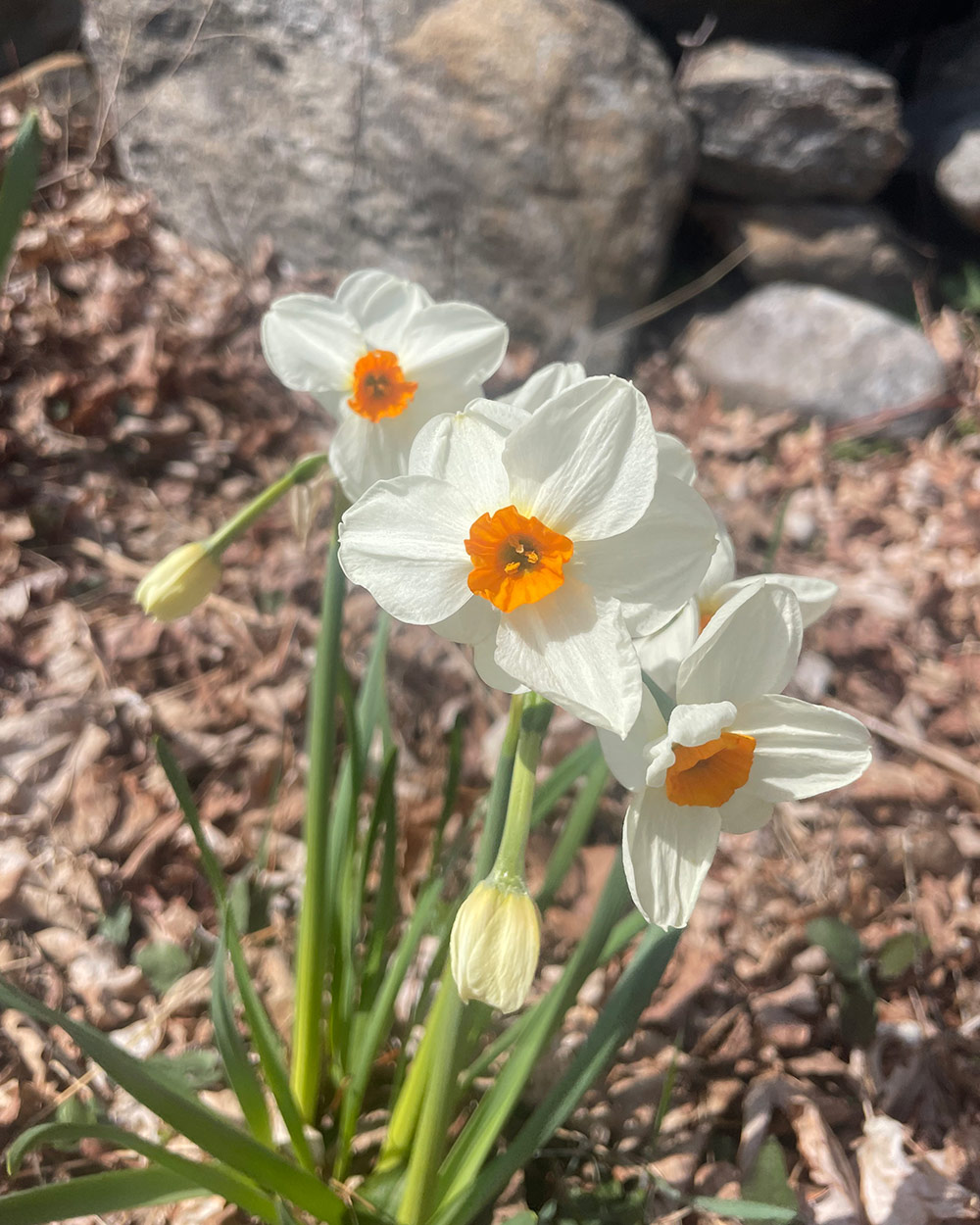 Most of the cultivars in bloom were trumpet and large cupped varieties, but this was the one small cupped flower that I spotted. While I originally thought this Barrett Browning (N. ‘Barrett Browning’, Zones 3–8) must have been a relatively new addition, I discovered this cultivar was first introduced in the 1940s and quickly started winning awards. So it could have been some of the earliest bulbs planted by the Morosanis!
Most of the cultivars in bloom were trumpet and large cupped varieties, but this was the one small cupped flower that I spotted. While I originally thought this Barrett Browning (N. ‘Barrett Browning’, Zones 3–8) must have been a relatively new addition, I discovered this cultivar was first introduced in the 1940s and quickly started winning awards. So it could have been some of the earliest bulbs planted by the Morosanis!
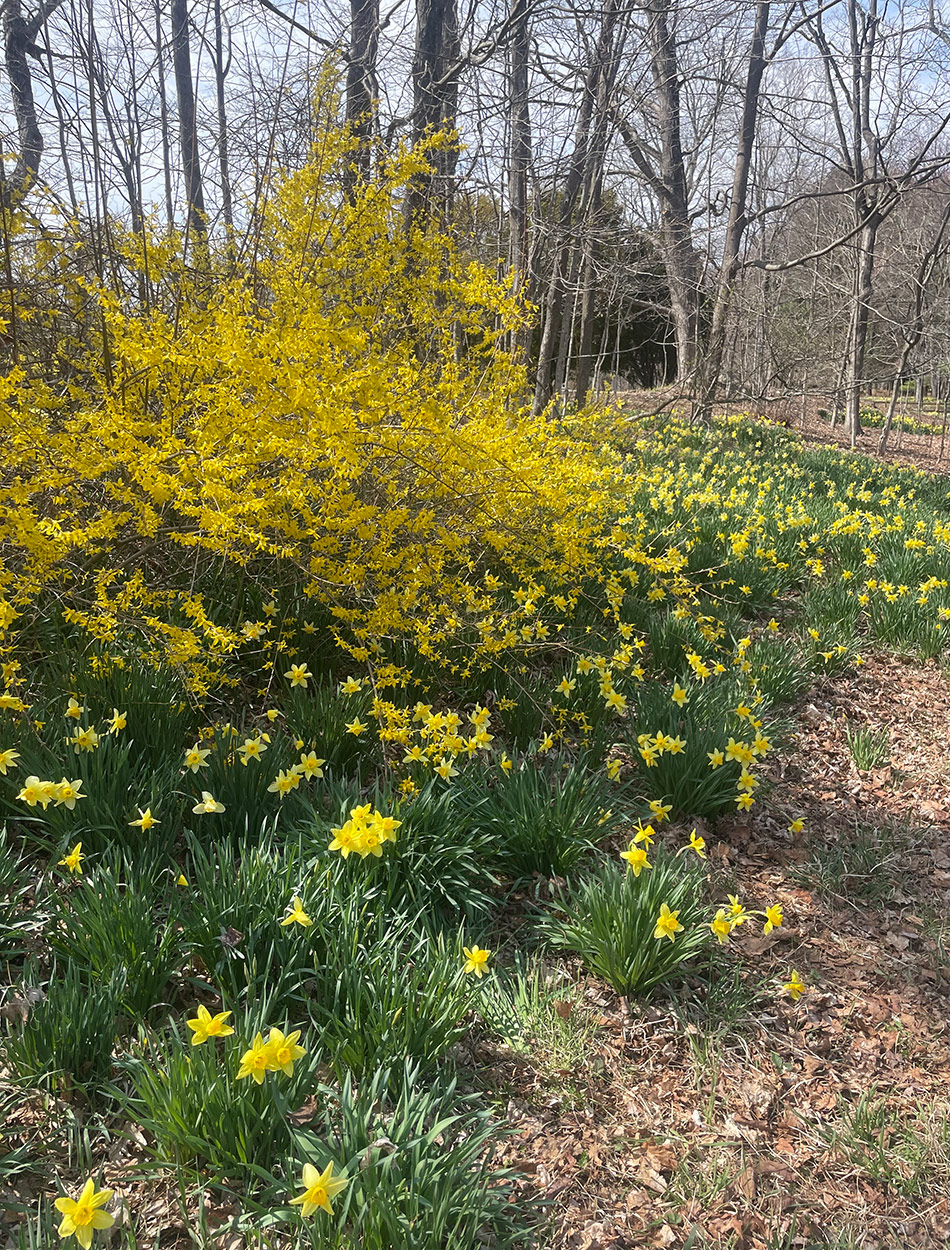 Lastly, it’s not spring in Connecticut without some forsythia. While I personally get tired of their splay of yellow blooms that messily invade roadsides in my area each spring, I thought it was actually delightful in this setting. It’s almost hard to distinguish where the daffodils end and the forsythia begin!
Lastly, it’s not spring in Connecticut without some forsythia. While I personally get tired of their splay of yellow blooms that messily invade roadsides in my area each spring, I thought it was actually delightful in this setting. It’s almost hard to distinguish where the daffodils end and the forsythia begin!
As I was conducting my research and gathering assets for this post, I realized that one of my predecessors, Michelle Gervais, featured Laurel Ridge on Garden Photo of the Day back in 2014! If you’re wondering what this exact destination looked like over 10 years ago, check that post out here: Fields of daffodils in Connecticut.
Do you have a local spring display that your community comes out en masse to enjoy? A street lined with the sweetest-smelling cherry blossoms? A park that gets covered in spring bulbs of all sizes and colors? Let us know in the comments, or consider sharing your local spring display with Garden Photo of the Day! Follow the directions below to submit photos via email, or send me a DM on Instagram: @agirlherdogandtheroad.
We want to see YOUR garden!
Have photos to share? We’d love to see your garden, a particular collection of plants you love, or a wonderful garden you had the chance to visit!
To submit, send 5–10 photos to [email protected] along with some information about the plants in the pictures and where you took the photos. We’d love to hear where you are located, how long you’ve been gardening, successes you are proud of, failures you learned from, hopes for the future, favorite plants, or funny stories from your garden.
Have a mobile phone? Tag your photos on Facebook, Instagram or Twitter with #FineGardening!
Do you receive the GPOD by email yet? Sign up here.
Fine Gardening Recommended Products
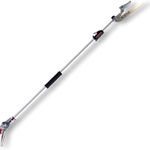
ARS Telescoping Long Reach Pruner
Fine Gardening receives a commission for items purchased through links on this site, including Amazon Associates and other affiliate advertising programs.
Telescopes from 4 to 7′. Cut and Hold (160) Blades. Drop forged blades for unsurpassed long lasting sharpness. Lightweight, 2.3 lbs., for continued use. Perfectly balanced for easy pruning.
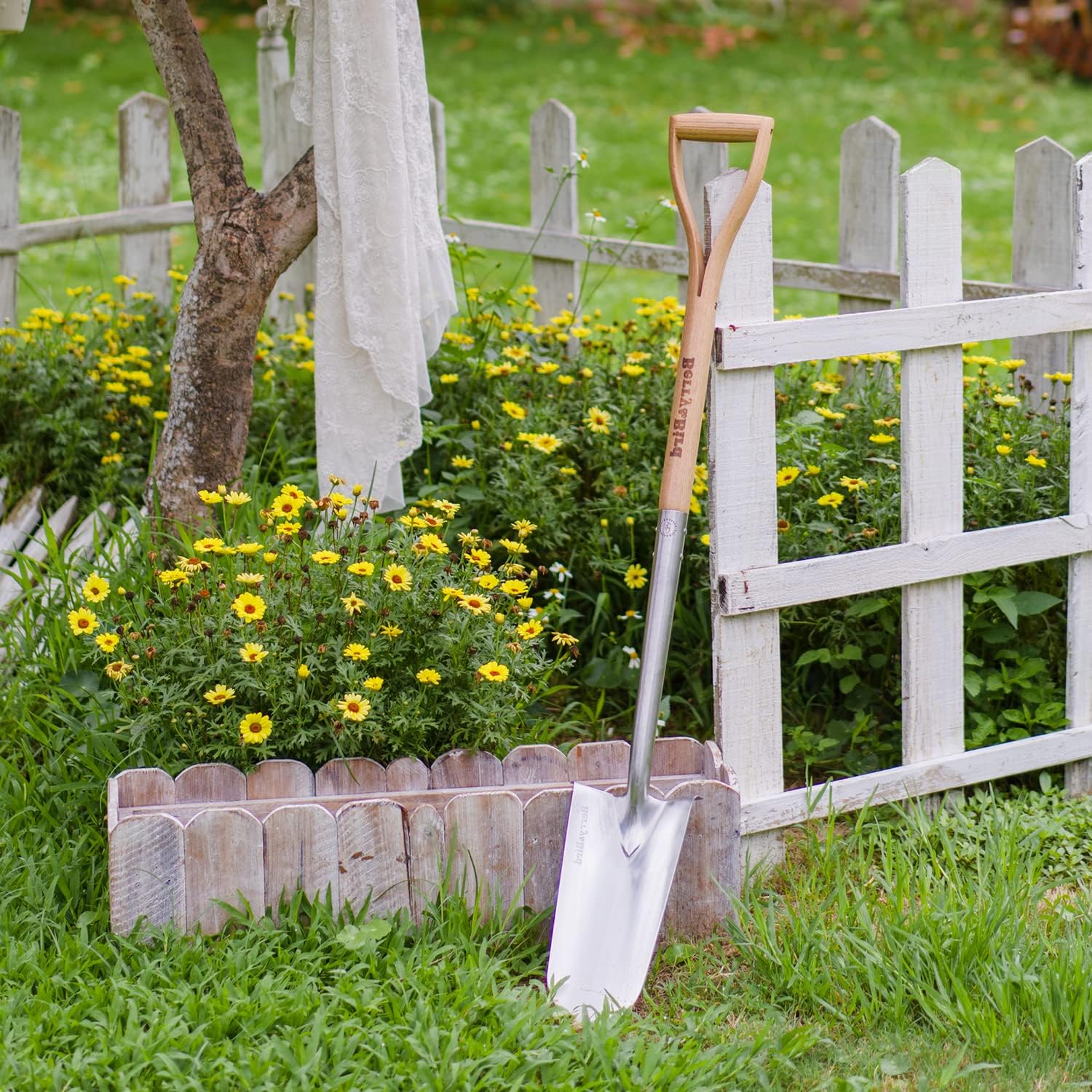
Berry & Bird Rabbiting Spade, Trenching Shovel
Fine Gardening receives a commission for items purchased through links on this site, including Amazon Associates and other affiliate advertising programs.
Ideal Tool for All Gardeners Use: Our heavy duty trenching shovel is designed by a professional gardening tool designer. Lifetime Durability: This heavy duty drain spade is made of high-quality stainless steel, it is very strong and durable, even if it is used for high-strength work, it will not bend. Ergonomic Wood Handle: The handle of this planting spade is made of ash hardwood harvested from FSC-certified forests and has an ergonomically streamlined design, making it very suitable for everyone’s hands. Multi-Use: This digging shovel is generally used for digging trenches, digging holes, transplanting, edging, moving compost, cutting thick turf and furrowing. The sharp blade allows you to cut, scoop, dig, lift and dice in hard soil.

